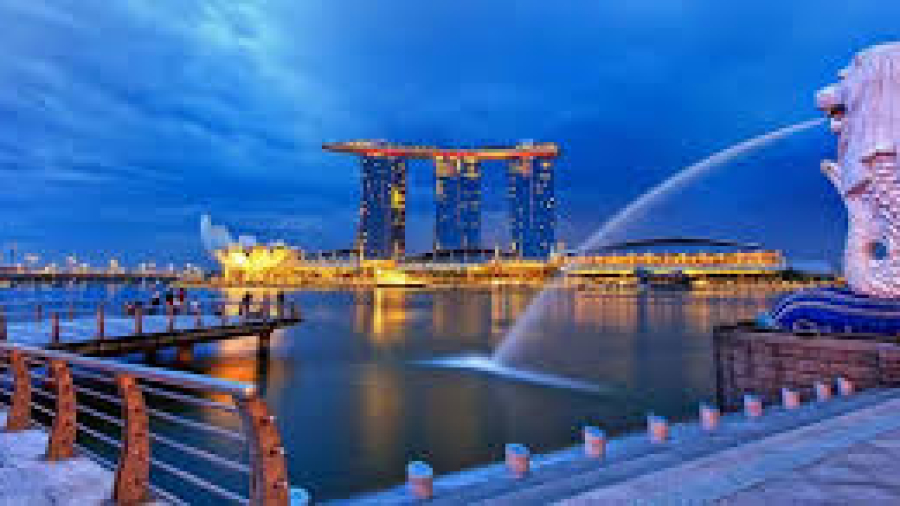“Expert Ferrari auto repair services to keep your prancing horse running perfectly. Trust our specialists for precision and our performance.”
The Future of Rhude Shorts From the streets to high fashion
Rhude shorts have taken the fashion world by storm. From the streets to high fashion runways, these shorts are everywhere. But what makes them so special, and what
How Do Bhutan’s Cultural Treasures Captivate Visitors?
Bhutan, nestled in the heart of the Himalayas, offers a rare combination of natural beauty and cultural richness that leaves every visitor spellbound. Known as the “Land of the Thunder Dragon,” this tiny country, known for measuring its progress not in GDP but in Gross National Happiness, captivates all who set foot in it.
How the best Places To Visit In Singapore Enthrall.
A visit to Bhutan is akin to stepping back in time. The Bhutanese have been successful in preserving their ancient traditions, rituals, and culture in the contemporary world. The enchanting monasteries, mystical dzongs (fortresses), and colorful festivals set amidst pristine mountain landscapes make for an unforgettable experience.
One of Bhutan’s most significant cultural treasures, the Taktsang Monastery or Tiger’s Nest, rests perilously on a cliff, 900 meters off the ground. Visitors hike uphill through the pine forest filled with prayer flags to reach the Tiger’s Nest, believed to be the meditation spot of Guru Padmasambhava, who introduced Buddhism to Bhutan.
Similarly, the Punakha Dzong, with its intricate Bhutanese architecture and serene surroundings, conveys an aura of peace that resonates in the souls of its visitors. As one of the country’s most beautiful dzongs, it bears a striking resemblance to the historical richness and architectural grandeur one might find in the best places to visit in Singapore, such as the iconic Raffles Hotel or the picturesque Chijmes heritage building.
Bhutan’s Living Culture: Festivals and Traditions
Bhutan’s culture is not just confined to its buildings. It also thrives in the vibrant festivals, such as the Thimphu Tshechu, where locals and tourists alike immerse themselves in the local culture. Adorned in traditional Bhutanese outfits, attendees watch spellbinding mask dances and participate in various rituals. These festivals are a testament to Bhutan’s rich heritage, showcasing centuries-old customs, music, and dances.
They offer a unique glimpse into the spiritual and communal life of the Bhutanese people, fostering a sense of unity and continuity in preserving their cultural legacy. From the intricate designs of the costumes to the rhythmic beats of the traditional music, every aspect of these celebrations reflects the deep-rooted traditions and values that define Bhutan’s identity.
Bhutan’s culture also extends to its cuisine. The country’s national dish, Ema Datshi, made from chili and cheese, delights the palates of visitors, much like Singapore’s celebrated Hainanese Chicken Rice or Laksa.
While Bhutan’s cultural treasures indeed captivate its visitors, its sustainable approach to tourism is equally impressive. Keeping the environmental impact minimal, they limit the number of tourists, further enhancing the charm and exclusivity of the Bhutanese experience. This eco-friendly approach reflects the green initiatives in some of the best places to visit in Singapore, like Gardens by the Bay or the repurposed green corridors around the city.
While we speak about the richness of Bhutan’s culture, what about the best time to travel? For Bhutan, the months from March to May (Spring) and September to November (Autumn) are generally considered ideal. That said, each season offers something unique. Spring brings lush green valleys and blooming rhododendrons, while autumn offers clear skies and pleasant weather.
But What About The Best Time To Travel To Singapore, Given Its Tropical Climate?
Singapore can be visited year-round, with each season offering different festivities and experiences. However, for fewer rain showers, the months between February and April are preferable.
In conclusion, Bhutan, like Singapore, offers a rich cultural experience that intensely captivates its visitors. The awe-inspiring architecture, natural beauty, age-old traditions, vibrant festivals, and warm hospitality in Bhutan are truly captivating, much like the multicultural diversity, architectural grandeur, and culinary delights that make Singapore one of the best places to visit.
To embark on a journey of discovery and step into a world of cultural splendor, consider planning your trip to coincide with the best time to travel to Singapore and Bhutan. Both destinations promise a rich tapestry of experiences that will leave lasting memories and a deep appreciation for their unique cultural treasures.
Travel Fashion Items: Travel Pillows for Airplanes
Introduction
The key to enhancing your travel experience is ensuring that you get sufficient rest throughout the journey. Because of their flexibility and comfort, they have become the preferred opportunity for many travelers. However, a key aspect of Travel Pillows that a lot of individuals overlook is the ways the size of the pillow affects users’ experience during the trip. To help in deciding on the accurate dimensions for your pillow, and to make your travel experience more pleasant this guide will give guidelines for maintenance and use as well as recommendations for the size of your pillow purchasing advice, as well as suggestions for choosing the right size.
The importance of travel size pillows
For long-distance travel, choosing the right size travel pillow is crucial to ensure the comfort of a peaceful sleep.
- Improved comfort when traveling
The ability to travel more comfortably is possible through the perfect comfort for the neck and head and an appropriate Travel Cushion of the appropriate size. While a cushion that is too small may not provide sufficient support and make the use of it challenging, an overly big cushion could be too big and cause enough discomfort when carried. A cushion that is shaped to the neck’s contours will conform to the curve of the neck giving solid support, and lessening the pain that can result from sitting in a single position for long periods.
- To avoid back and neck pain, it is important to reduce the risk.
Pillows for travel that are of the correct dimension could benefit alleviate neck and back pain. If the pillows are not sized correctly, they may not provide the right cervical and head comfort, which can cause pain and strain within the muscles of the neck. A proper size can help prevent stiffness and pain in the muscles that could result from a chronic poor posture. It also protects the natural curve of the cervical spine.
- Improve the quality of rest and travel experience
Your experience on the road and how well you rest are directly affected by the dimensions of your travel cushion. A cushion of appropriate size can help the person while allowing them to improve their posture to get more restful sleep. Long journeys require a peaceful night’s rest for good well-being. When you travel or work during long hours, the appropriate size of pillow can benefit users in getting a good night’s rest to reach their final destination less tired after their trip. This improves the experience of traveling overall.
Important factors when selecting a travel size pillow
When choosing a travel pillow, it is important to take careful consideration of its dimensions. The right size ensures flexibility and comfort while also providing sufficient support and ease of use.
Knowing the material is like knowing if the person is right for you when you are in a relationship, you need to know more to find the best travel pillow for you.
- The size and needs of the user
The size of the neck and head The size of the head and neck will vary depending on each person’s particular measurements, and the ideal size of the pillow will vary. Although smaller people can manage using a smaller cushion larger people may require a more robust, larger pillow to give adequate support. Personal preference and preferences for use A few people prefer compact pillows for restricted spaces, while other people prefer more cushioned pillows.
- Space limitations
Travel mode The different modes of travel require different sizes of pillows. In small spaces, such as airplanes, trains or automobiles small and lightweight pillow sizes are most suitable, and large spaces like self-drive tours permit smaller pillows. Travel pillows shouldn’t be too large in your luggage, and they should be easy to store away when not being used. In this way pillows that fold or compression design are a great option and perfect for business travelers or for those who need to travel frequently.
- Pillow design and features
Support area: Travel pillows vary in design and support area. While some pillows only support the neck, others provide complete head, neck, and shoulder support. You should think about what kind of support best meets your needs while making your decision. Multipurpose and adjustable: Certain travel pillows may be shaped to accommodate various poses and purposes. These pillows often come in a variety of sizes to accommodate a broad range of requirements.
- Materials and Fillings
Memory Foam: Although memory foam pillows are often smaller in size, they provide excellent comfort and support. To make sure the pillow size fits your needs. you must take the density and thickness of the memory foam into account while making your selection. Inflatable pillows: These pillows are quite flexible in terms of size and can be adjust to the desired size. Make sure the inflatable can offer sufficient support and is simple to deflate and store before making your purchase.
- Scenarios and frequency of use
Long-distance travel: Long-distance travel require long periods of pillow use, and the size should be prioritize. To provide long periods of comfortable support. Short journeys and daily use: For short journeys or daily commuting, choose a pillow that is compact enough to carry and use.
- Cleaning and Care
Ease of cleaning: The size of the pillow will also affect the ease of cleaning. Smaller pillows are usually easier to disassemble and clean. while larger pillows may require more time and effort to clean and maintain, be aware of whether it has tools for disassembly. Durability: choosing the right size pillow can meet the needs of use, but also improve. The durability of the pillow by reducing unnecessary hassle in daily cleaning and maintenance
Top 10 Best Tutoring Academies in Rawalpindi
Choosing the right tutoring academy is crucial for a student’s academic journey and personal growth. Factors such as faculty expertise, teaching methodologies.
Role of Social Media Marketer in Your Business
Social media marketing fuels brand awareness, sparks consumer connections, and crafts targeted ads for business growth with passion and precision.
How long can tapeworms live in humans?
Tapeworms, long, flat parasitic worms, can invade the human digestive tract, causing a range of symptoms and discomfort.
Your Glucose Can Assist with Weight reduction
Persistent pressure can raise glucose levels because of the arrival of cortisol. Integrate pressure diminishing exercises like yoga, contemplation.
Buy Online Drain Hair Catcher and Bathroom Stopper
A bathroom stopper is a device used to block the drain in a sink or tub, preventing water from flowing out. It’s essential for tasks like filling a tub or soaking items.
Money Saving Tips for Planning a Visit to Africa travel
Explore Africa affordably! Plan off-season trips, book flights early, try budget accommodations, travel overland, eat local, bargain wisely, and enjoy free activities.



